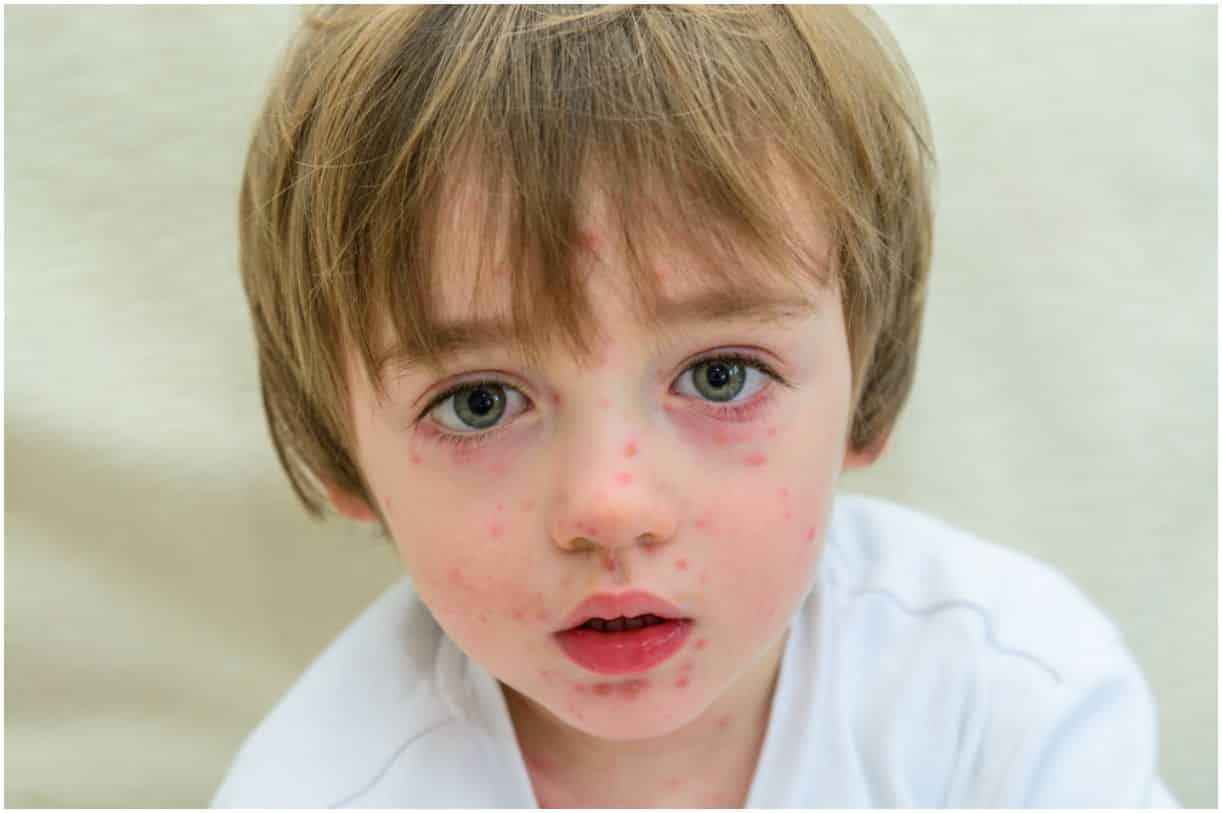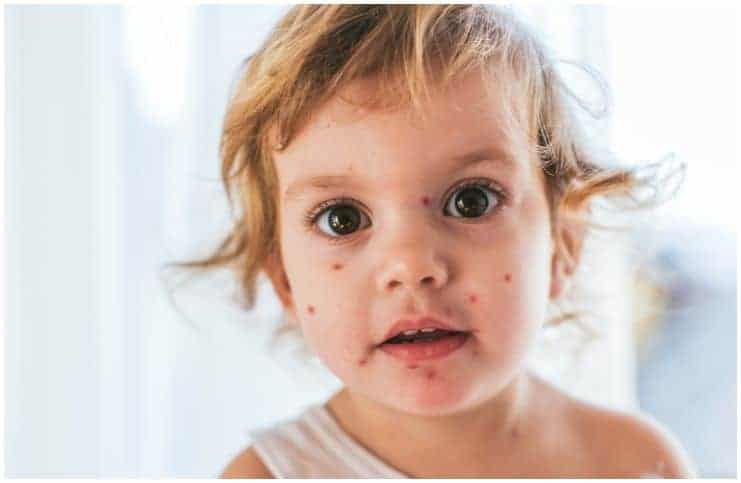Measles vs Chicken Pox – Here is a comparison between two common childhood diseases:
Facts On Measles
Measles, also known as rubeola or morbilli, is a viral infection of the respiratory system. Individuals who recover from this disease are immune for the rest of their lives.
Complications are likely to develop if the fever does not drop within one or 2 days after the onset of the rash. Most children recover from this infectious disease without experiencing severe complications. However, complications from rubeola are more frequent and more severe in the chronically ill and in very young children.
Symptoms
The usual time from exposure to a person infected with this condition to the development of the initial symptoms is 10-12 days, and they include:
- a skin rash made up of large, flat blotches that usually flow into one another. It usually begins as flat red spots that appear on the face at the hairline and spread downward to the neck, arms, trunk, legs, and feet.
- fever that can range from mild severe, up to 40.6 degrees. Furthermore, the fever can last two days and it may fall and then rise again when the rash appears.
- light sensitivity;
- muscle aches;
- cough;
- a runny nose;
- red eyes;
- a sore throat.
A day or two before the rash appears many sufferers with rubeola develop small greyish-tiny white spots (Koplik spots) in their mouth with bluish-white centers on a red background.
Causes
According to the Centers for Disease Control and Prevention (CDC), it is caused by the measles virus, a single-stranded, enveloped RNA virus of the genus Morbillivirus within the family Paramyxoviridae. Also, this virus lives in the nose and throat mucus of an infected person. Physical contact, sneezing, and coughing can spread the infection.
Duration
Most children are better within 7-10 days.
Treatment
Since this disease is caused by a virus, there is no treatment for it and the virus has to run its course.
It is usually accompanied with a fever that can peak at 40°C (104°F). For fever, aches, and pains, ibuprofen or paracetamol is prescribed.
Important note – for children under the age of 16 aspirin should not be given. Antibiotics may be used if a secondary bacterial infection, like – pneumonia occurs.
Patients must drink plenty of liquids as they may be at risk of dehydration. Moreover, intravenous rehydration may be necessary if dehydration is severe. Additionally, it is recommended to avoid caffeine-rich drinks and soft drinks. Sponge baths with lukewarm water may reduce discomfort due to fever.
According to a study issued by the U.S. National Library of Medicine, giving vitamin A therapy to sufferers has been shown to reduce the mortality rates of children under the age of 2. It’s usually given as a large dose of 200,000 international units (IU) for two days. Patients may also consume foods high in vitamin A, like – sweet potatoes or carrots.
Facts On Chicken Pox

Chickenpox, also called varicella, is a viral illness characterized by a very itchy red rash. It is one of the most common infectious diseases of childhood. Varicella usually isn’t a serious health problem in healthy children.
Nevertheless, serious complications are more likely to occur in pregnant women and in people with a poor immune system, such as those taking immunosuppressive medications or those on chemotherapy, since they are more likely to experience complications, like – varicella pneumonia.
Symptoms
- an itchy rash that turns into itchy, fluid-filled blisters that eventually turn into scabs that fall off after 7 to 14 days. The spots heal at different stages, therefore, your child may have the rash in a few different stages at once. Furthermore, some children have mild varicella with under 50 spots and others with hundreds of spots. Tip – scratching the blisters can lead to scars, which may form after the blisters heal.
- little or no appetite;
- fever;
- headache;
- aching muscles;
- a general feeling of being unwell.
These symptoms may last for a few days, with the fever in the 38.3°–38.8°C (101°–102°F) range.
Note – the symptoms tend to be worse in adults than in children.
Causes
It is caused by the chickenpox virus, which is called varicella-zoster virus (VZV).
Most cases occur through contact with an infected person. The infection spreads in a similar way to colds and flu – by releasing the virus into the air whenever they cough or even breathe. Moreover, it may spread through contact with the blisters.
Spring and winter are the most usual times of the year for varicella to occur.
Duration
It commonly takes between 7 and 21 days for symptoms to appear after becoming infected and lasts about five to 10 days.
Treatment
Treatment will focus on reducing itching and fever. It is important to give your child plenty of fluids and avoid giving him food high in sodium which may make his mouth sore because some kids will get spots in there too. Use paracetamol if you or your child have a high temperature and feel uncomfortable.
Dress children comfortably so they are not overheated or cold. Use cool smooth fabrics such as cotton.
Aloe Vera and vitamin E oil speed up the healing process of the disease and help reduce the chances of having scars.
Important note – aspirin should not be given, as this has been associated with Reye’s disease (a severe disease which affects the brain and liver and can cause death) in children with varicella. Antibiotics will not cure this infectious disease.
READ MORE: Foods High In Niacin (Vitamin B3)
